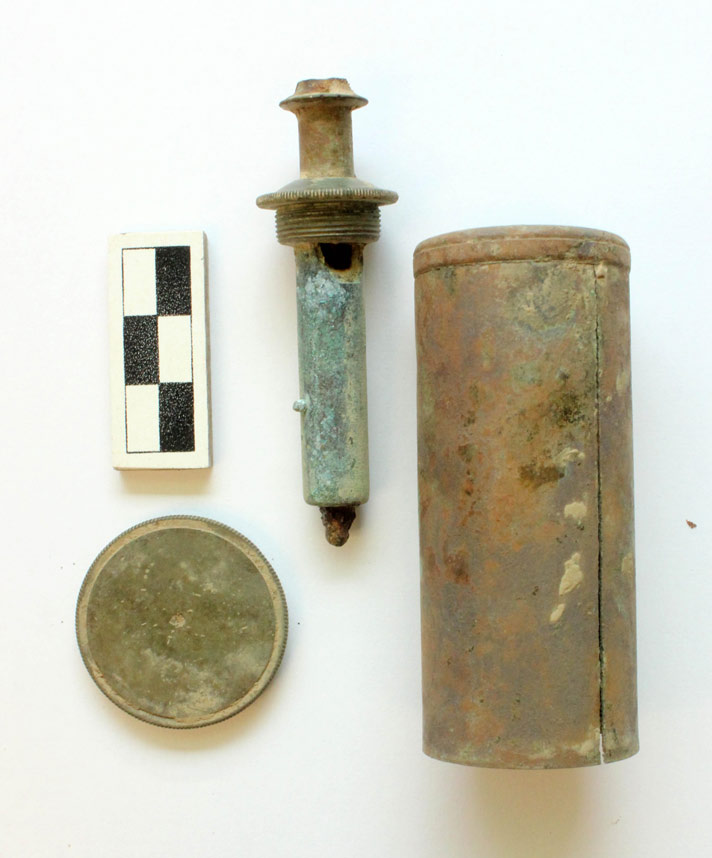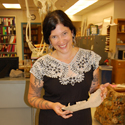Digging Jacksonville – November 2015
As the days get cooler, shorter, and darker, it is a good time to reflect on what it must have been like to live in Jacksonville pre-electricity. There were no switches to flip to illuminate the kitchen while you made dinner, or the living room as you cozied up with a book by the fire. During our excavations across town we have found dozens of artifacts related to home heating and lighting, all of which illustrate the suite of artifacts that were once plentiful in every home. Decorative oil lamps, chimney glass and wall sconces have been found in abundance, but the most interesting item to date was the brass “oil candle” excavated from the Britt house.
When the artifact was first excavated, we were puzzled by the curiously well-preserved little brass tube. It was obvious that the base would unscrew, and the top once it was open. Guesses on its use ranged from photography equipment, to oil can, to chemical canister. However, as we did not know its original use (or contents) we left it alone until we could have the artifact properly analyzed.
Over the past year we have been sending archaeological materials to the University of Idaho chemistry department, where Dr. Ray von Wandruszka and his students have been conducting chemical residue analysis in order to provide information about the original contents and use of the artifacts. When we sent them the mysterious tube, Dr. von Wandruszka and his students discovered that the artifact easily came apart into three pieces, and that it was likely used as type of lamp known as the oil candle. The hollow chamber would have held lamp oil or alcohol, and a wick would have been threaded through the central tube, so that it could be lit at the top. The size of the item would have allowed for it to fit within a regular candle holder, or it could have been carefully balanced directly on a table.
The oil candle was found in a midden (archaeologist speak for trash pile) along with mining pans, toys, glass photography plates, and other household items. While no specific date has been attributed to the artifact, the larger assemblage dates to roughly the 1870s. The oil candle allows us to shed light on daily life within the Britt household. Did Peter Britt use the oil candle in his studio? Did it illuminate family dinners? Perhaps Britt wanted to try the oil candle in order to replace wax candles, or perhaps it was more conveniently portable than an oil lamp. Did the oil candle get tossed because it leaked? Or maybe it never worked as advertised? Most of these questions can never really be answered, but nonetheless, the artifact helps us better understand the everyday items that made the Britt family house a home.
The 2010 excavations at the Britt Gardens were funded by the City of Jacksonville.

 Chelsea Rose is an historical archaeologist who specializes in the settlement and development of the American West. Chelsea and the Southern Oregon University Laboratory of Anthropology (SOULA) conduct archaeology across Oregon and have done several projects in Jacksonville. You can reach Chelsea at rosec@sou.edu and follow SOULA on
Chelsea Rose is an historical archaeologist who specializes in the settlement and development of the American West. Chelsea and the Southern Oregon University Laboratory of Anthropology (SOULA) conduct archaeology across Oregon and have done several projects in Jacksonville. You can reach Chelsea at rosec@sou.edu and follow SOULA on